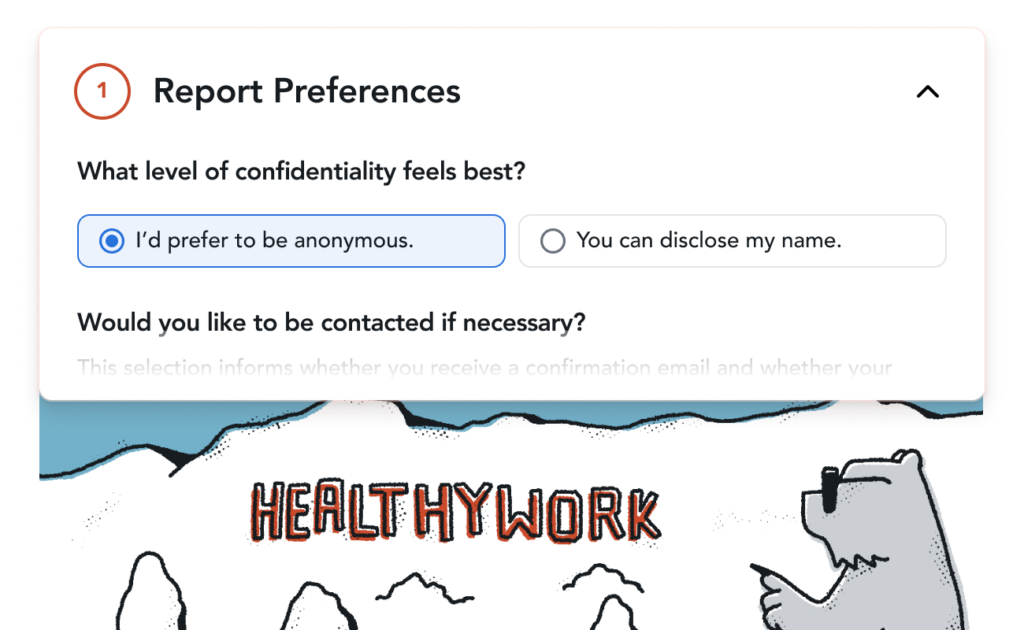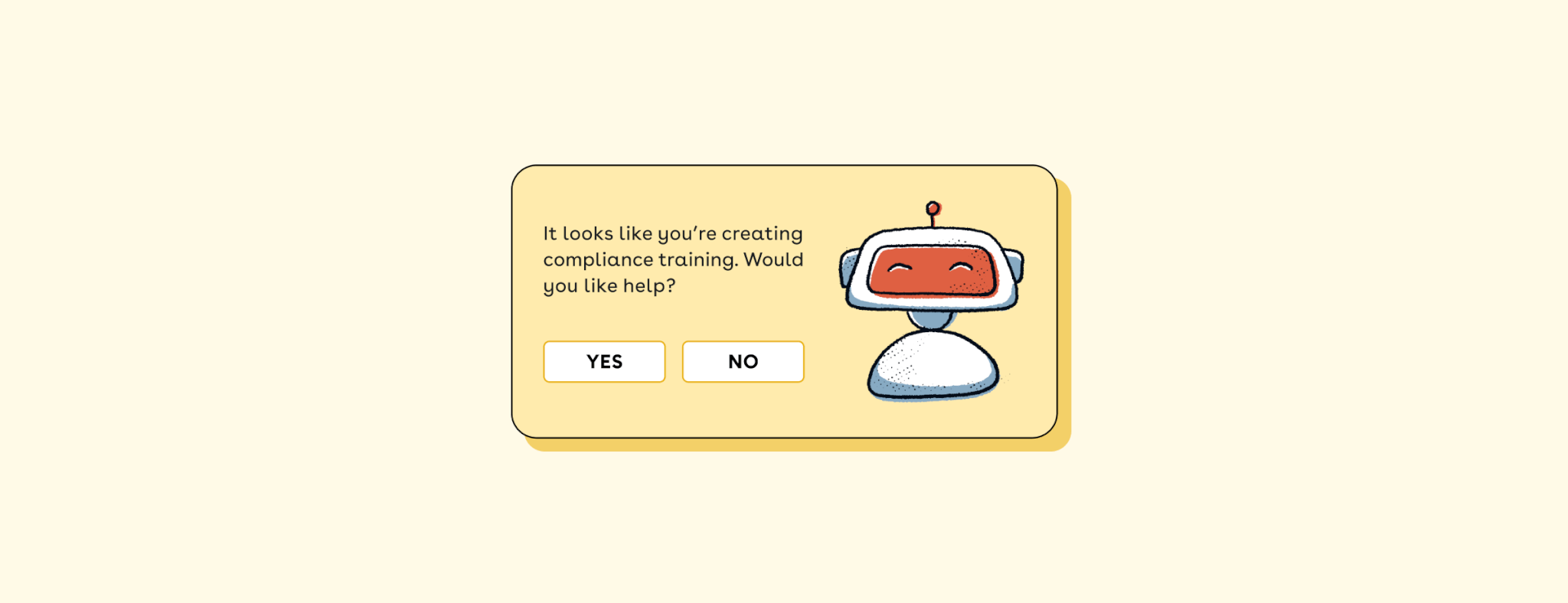In a perfect world, creating a safer workplace would be entirely a matter of prevention: ensuring, through a respectful and equitable culture, that harassment and discrimination never happen in the first place.
But taking on this project in a serious way means dealing with the real, flawed world — and the fact that harassment still happens. That’s why we teach (and preach) bystander intervention, and it's also why we owe it to ourselves to understand, prevent, and address retaliation in the workplace.
What is retaliation in the workplace?
Retaliation in the workplace — also called “reprisal” — occurs when an employer fires, demotes, or takes another type of adverse action in response to an employee who engages in a protected activity.
Examples of protected activities include:
- Filing a Equal Employment Opportunity Commission (EEOC) complaint or serving as a witness in one
- Reporting workplace discrimination through company channels or escalating to a manager
- Participating in an investigation of alleged harassment
- Refusing sexual advances in the workplace or intervening to prevent harassment
- Declining to follow directions that would result in discrimination, or
- Requesting an accommodation
Workplace retaliation examples
Managers cannot punish or harass employees for reporting job discrimination, harassment, or other illegal conduct — even if the reported behavior ends up not being illegal. That’s what we mean when we say these activities are protected: employees are literally safe from retaliatory actions if they decide to address wrongdoing.
In no uncertain terms: retaliation is illegal. But it can be subtler than an outright firing, which is why it’s important to train employees on how to identify retaliation tactics so they know how to report incidences of retaliation at work.
Retaliation can take many forms. Here are some examples of retaliation in the workplace:
- Demotions or transfers to less desirable positions, teams, or worksites
- Lower ratings on performance reviews
- Increased scrutiny on performance compared to other employees
- Cutting back an employee’s hours
- Increasing an employee’s workload
- Verbal abuse from management or teammates
- Isolation away from the team or social ostracization
How to prove retaliation in the workplace
Proving retaliation in the workplace can be a challenging process, requiring a careful collection of evidence and a thorough understanding of employment laws. To establish a retaliation claim, the employee must demonstrate three key elements:
- Engagement in a protected activity
- Adverse action by the employer
- Casual connection between the two
Why should companies care about workplace retaliation?
At this point, we've established that retaliation is illegal. Yet, according to the EEOC, it's also “the most frequently alleged basis of discrimination in the federal sector and the most common discrimination finding in federal sector cases.” In fact, the majority of EEOC claims in 2020 cited retaliation.
This tells us that workplaces that encourage employees to safely speak up about wrongdoing aren't as common as we'd like. Regardless, any company committed to addressing harassment and discrimination in a meaningful way has a responsibility to prevent retaliation.
Even as companies increasingly encourage their employees to practice self-care, the potential for retaliation in the workplace is at the forefront of people’s minds when they make health and wellness decisions. According to a May 2021 survey by the American Psychiatric Association, over 4 in 10 employees worry about retaliation if they seek mental health care or take time off for mental health. That number gets even higher for employees 18-29 years old (59%) and 30-44 years old (54%).
The bottom line: the healthy, ethical, efficient workplace of your dreams isn't possible without an explicit anti-retaliation culture. And that requires implementing effective training that helps your employees and managers identify and report retaliation when they see it.
Why preventing retaliation is critical for businesses
1. Retaliation is terrible for team morale.
Retaliation doesn’t only impact the person affected — it sends a disastrous message. If good-faith efforts to curb harassment lead to retaliation, other people will be less willing to come forward, and it’s pretty much impossible to establish trust in an environment where people suffer for trying to speak up.
Retaliatory environments can foster low employee morale and a radioactively toxic culture.
2. Retaliation is detrimental to your company’s success.
Retaliation costs organizations money. Not only could you face fines and lawsuits, your corporate reputation is also likely to be affected. Faced with no accountability from management, employees will leave or take legal action — or both. Addressing and preventing retaliation is a key way for a company to communicate that reporting wrongdoing is safe, which is, of course, in a company’s best interest. You can’t address issues that no one is willing to bring up.
3. Managers, in particular, need to know what to do.
Managers play a key role in preventing retaliation, which can come from higher-ups or from peers. It’s a manager’s responsibility to make sure people understand that retaliation is illegal and will not be tolerated. They’re in charge of setting expectations, representing the company culture, and resolving conflict early-on when necessary.

Managers are furthermore the ones with eyes on the situation, and they need to know how to act. Managers are required to report any retaliation of which they’re made aware — even when they’re not the manager of the person being targeted — so it’s essential that they be able to recognize it. Retaliation can be subtle — sudden exclusion from important meetings, being overlooked for promotions — and it’s on managers to keep an eye out.
Of course, it’s also on managers not to retaliate. Building a feedback culture can prevent many instances of complaints and retaliation before they ever crop up.
But if an employee alleges harassment, it might strike a manager as helpful to move that person to a different department, away from their harasser, while an investigation gets underway. But taking steps like these without getting all the context and consulting HR can lead to more harm and even to law-breaking. Don’t leave your managers out there to improvise harassment prevention on their own — instead, train them on a proper anti-retaliation response.
What makes Ethena’s Harassment Prevention training stand out?
1. It saves administrators like you time.
What good is training if you can’t get clarity on when it’s going out and to whom?
- And if they’ve finished?
- And what if they moved states?
- And how about if they became a manager recently?
Don’t spend energy worrying whether your messaging on these crucial issues is making contact. With both powerful automation and flexible customization, Ethena’s admin experience takes care of it.
2. It uses employees’ time well.
Ethena’s modern tech offers flexibility for your employees to finish their training on their own schedule regardless of location or time zone. It also saves their progress automatically if they need to step away from their desk.
3. It shows that you take this stuff seriously.
When it comes to retaliation, broken trust has disastrous results. Your employees need to know that when they speak up, they’re protected from retaliation, and that your company is invested in identifying, preventing, and stopping it. Educating every employee on their rights is part of a company’s responsibility in fighting harassment and discrimination.
One tip on how to do this includes instituting Employee Hotline & Case Management tools. It’s a confidential and easy way to gather misconduct reporting from your employees, and it’s even more effective if its handled by a third party like Ethena.

Another tip is having a configurable Code of Conduct training. No, not the dusty, 200-page book of rules you give employees on their first day. We’re talking a modern tool that you can add in your policies and procedures, send to your employees via Slack, email, or other notifications, and that they can take mini-refresher courses on it as you see fit.
Getting the most out of anti-retaliation training
Retaliation in the workplace is insidious, and companies have a responsibility to address it. That’s why anti-retaliation training is an essential piece of Ethena’s flagship Harassment Prevention course. Equip your team with the tools they need — get in touch today!










